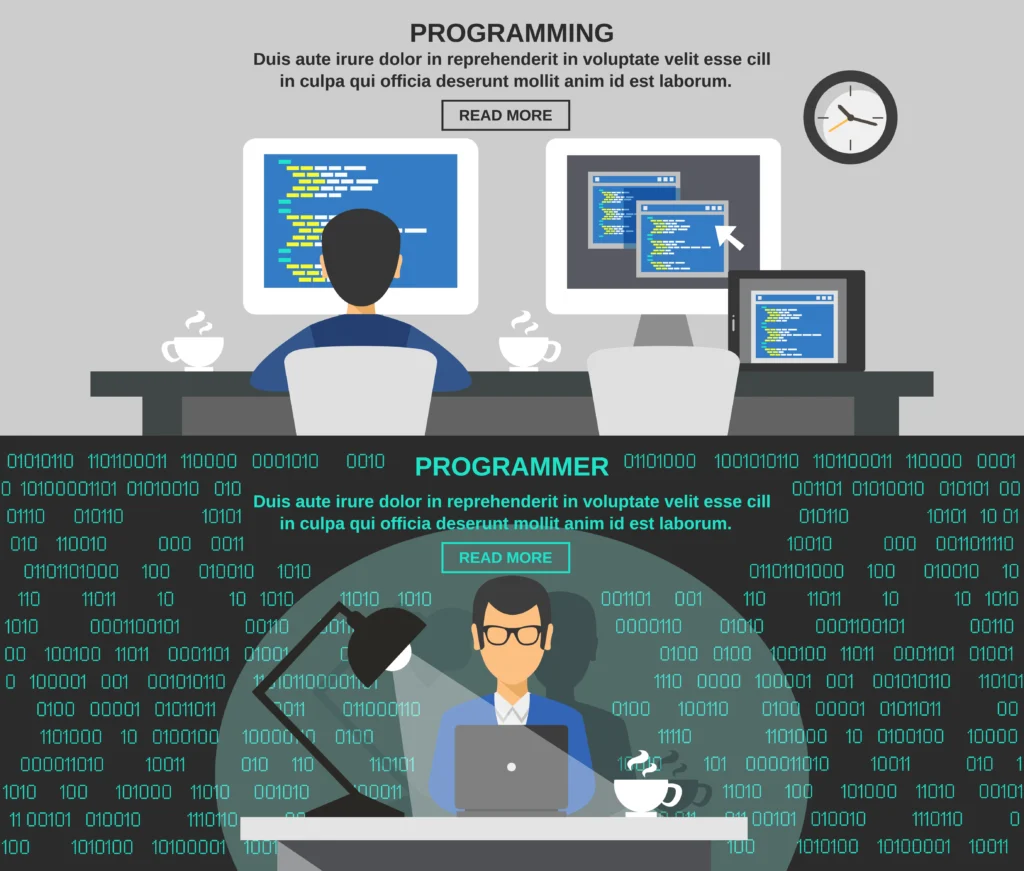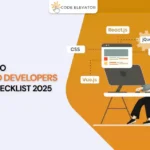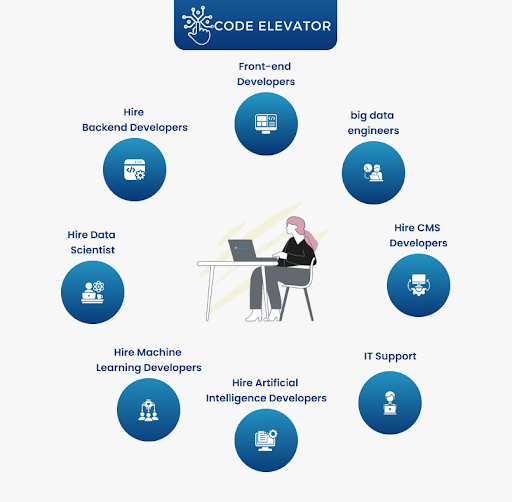Table of Content :
Table of Contents
Introduction
In the event that businesses want to develop digital solutions One of the most crucial decisions involves picking the appropriate kind of developer. Are you better off hiring either a backend or full-stack developer? The answer to this question, often referred to as the backend developer versus full stack developer affects your project’s success, the cost and the scalability.
In today’s highly competitive and tech-driven market development, demand for developers has been increasing rapidly. Many companies struggle to comprehend what the differences are between full stack and backend and frontend tasks. To choose the most appropriate option It is essential to understand what Fullstack is, and what the word “backend” means and the ways they work or contrast in a workplace.
Let’s get into the whole backend vs stack debate to assist you in deciding which one your company really needs.
What is Fullstack?
If you’ve ever wondered, “Fullstack–what is it really?” You’re not the only one. In essence the term “full stack software development” is the capability to develop both the front end (user interface) as well as the backend (server-side processing and databases). Full stack developers bridge the gap between the two sides of a program, making sure seamless communication and functionality.
Fullstack: What Is It in Simple Terms
Imagine constructing an eatery. The frontend of the restaurant is an eating area, with tables, chairs as well as menus that allow customers to interact. In the backend, there is the kitchen where food preparation takes place. Full stack developers are equivalent to a chef. They can create the dining area and provide service to clients.
They are useful for small and start-up companies. They can manage front end and backend stack jobs at the same time, which reduces the requirement to employ several experts.
The Evolution of Full Stack Software Development
At the beginning of the internet, designers were usually specialized in backend or frontend. As web applications grew in complexity and complexity, the need for specialists with the ability to manage both. Nowadays the full stack and backend and frontend does not simply represent an issue of skill, but it also represents two different career paths as well as the business models.
What is Backend Development?
As full-stack developers are able to wear various hats, developers for backend focus on what is known as the “engine room” of applications.
The Role of Backend Developers
The backend developer is responsible for developing the databases, logic as well as server-side functions that help make an application run. Without these components, even the most attractive frontend design would not be useful. Principal responsibilities comprise:
- managing APIs to connect the frontend and the backend
- Storage of data as well as security and retrieval
- Securing scalability and quality
- Building authentication systems
If businesses are comparing backend to fullstack solutions, they tend to prefer backend developers for tasks that require a large amount of data security issues, large users.
Core Technologies Used in Backend Development
Backend developers generally employ programming languages, such as:
- Node.js, Python, Ruby, PHP, Java for server-side logic
- MySQL, MongoDB, PostgreSQL for databases
- REST APIs/ GraphQL to allow communication between the frontend and backend
In the whole stack vs. backend developers debate, specialists from backend have deep expertise on server-side infrastructure.

Full Stack vs Backend: Key Differences
Once we’ve identified the two roles, let’s take a look at the key differences between them.
Backend vs Fullstack: Scope and Responsibilities
- Backend Developer: Focuses exclusively on backend end functionality–databases, servers, APIs, and application logic.
- Full Stack Developer takes care of the backend as well as frontend tasks such as UI/UX, APIs and integrations.
The debate does not revolve around the full stack or backend as being superior, it’s about which one is more suitable depending on your particular business needs.
Full Stack vs Backend vs Frontend
For simplicity, let’s look at comparing each of them:
Role | Focus Area | Typical Tasks | Business Use Case |
Frontend Developer | User Interface | Making apps or websites that let users can interact with | Products that are designed for customers |
Backend Developer | Server & Database | APIs, security, data handling | Enterprise apps, SaaS, banking systems |
Full Stack Developer | Both UI & Server | End-to-end development | Small teams, startups MVPs |
This table can help clarify the frontend and backend full stack split.
Backend vs Full Stack Developer: Skills and Responsibilities
We’ll look at the real capabilities that distinguish the full stack developer from a backend developer.
Full Stack Developer vs Backend Developer: A Breakdown
- Backend Developer Skills:
- Expertise in the backend programming languages (Python, Java, PHP and so on.)
- Database management expertise
- Knowledge of server optimization and security
- Expertise in the backend programming languages (Python, Java, PHP and so on.)
- Full Stack Developer Skills:
- All of the mentioned PLUS the front-end languages such as HTML, CSS, and JavaScript
- Experience with frameworks (React, Vue, Angular)
- The ability to create UI and handle the server side logic
- All of the mentioned PLUS the front-end languages such as HTML, CSS, and JavaScript
That’s why the masterful full-stack developer is commonly described as”a “jack of all trades.”
Front End vs Back End vs Full Stack: Who Does What?
- Frontend Developer – Creates”the “face” of the app.
- Backend Developer – Runs the “engine” of the app.
- Full Stack Developer: Manages both ends, while ensuring peace.
When businesses are weighing frontend and backend fullstack, the choice often boils due to the size of teams and the project’s scope.
Backend vs Fullstack in Business Projects
In deciding between fullstack and backend to implement a new project, companies must consider the possibility of scaling, costs and the difficulty.
When to Hire a Backend Developer
The backend developers shine when:
- The application demands a significant amount of processing of data.
- The security and compliance of your business is a major concern (e.g. applications for healthcare, banking).
- The system has to be able handle the high volume of traffic as well as performance scale.
- The frontend management is handled by a different team. Therefore, the backend is handled by a specialist.
Examples: Enterprise ERP systems, AI-driven analytics platforms or Fintech-related applications.
When a Full Stack Developer Makes More Sense
Developers with full stack are your most appropriate alternative when:
- Making the MVP (Minimum Viable Product) quick.
- The business is still a start-up that has very limited resources.
- The project must be integrated from end to end of backend and frontend.
- It is essential to have a professional that can be flexible to new the roles.
Examples include E-commerce companies, SaaS platforms in early stages, and company internal instruments.
This is the reason why the backend vs. full stack debate with developers is always based on the particular business situation.
Front End, Back End, Full Stack: How They Work Together
When a Full Stack Developer Makes More Sense
| Aspect | Front End | Back End | Full Stack |
| Focus | User interface | Server logic & database | Frontend and Backend |
| Tools | HTML, CSS, JavaScript | Node.js, Python, PHP, SQL | Mix of tools from both |
| Use Case | Branding, UX/UI apps | Secure, data-driven apps | MVPs, Startups, cross-functional initiatives |
Advantages of Hiring a Backend Developer
There are numerous instances where experts in the backend beat generalists.
Backend Strengths in Large-Scale Applications
- Backend developers are experts in systems architecture and ensure that apps are built to scale.
- Custom APIs are developed to meet specific requirements of businesses.
- They have more security measures essential for businesses like healthcare or finance.
In the case of businesses that have complex system, backend developers tends to be more reliable than the generalist full-stack developer.
Backend End Security and Database Management
One of the greatest benefits of developers who work on backends is their knowledge of the management of data and security. They know about security, encryption, compliance requirements, and strategies for disaster recovery. For instance, in the e-commerce backend, the developers safeguard the payment information of customers and maintain massive database of inventory.
These specialists make backend experts indispensable in enterprise-class applications.
Challenges of Each Role
The job is not perfect. Backend developers and full-stack developers are accompanied by the same set of issues to be considered by businesses prior to taking a hiring decision.
Challenges Faced by Backend Developers
- Limited Flexibility: Developers of backends do not normally work on user interfaces. Therefore, they could be unable to tackle jobs that require knowledge of frontends.
- Dependence on other teams As they concentrate only on logic for the backend the backend developers are dependent on frontend experts to finish the project. This may cause delays to the timeline of projects.
- More expensive for full teams In the event that you only hire backend experts, you’ll have to recruit front-end developers too, adding to overall development costs.
Challenges Faced by Full Stack Developers
- Jack of All Trades, Master of none: One of the most common complaints is that even though full-stack developers are knowledgeable about only a tiny bit about everything however they aren’t able to provide extensive knowledge in the frontend or backend.
- Scalability Limitations: In the case of complex enterprise-level projects, one full-stack developer might not be enough for the entire development process.
- The risk of burnout is that because they are juggling multiple roles Full stack developers typically encounter higher demands that can cause burning out if they are not properly managed.
Recognizing these obstacles can help companies make the right choice between backend and fullstack talents.
Backend vs Fullstack: Cost Considerations
One of the major key factors that businesses consider is the efficiency of their costs.
Budgeting for Backend Developers
- More expensive hourly rates Specialists in backend often are charged more due to their expertise in technology.
- Additional Cost for Hiring: Because backend developers aren’t typically responsible for the front end work, you’ll have to find additional workers for the task.
- Best for Enterprise Projects: This extra cost is worth it for those who require a safe, reliable, flexible, and powerful backend infrastructure.
Budgeting for Full Stack Developers
- Cost-effective to Startups A full-stack developer could take on multiple positions, bringing the cost of payroll.
- Speedier Time to Market: Because they manage both sides of the process Full stack developers can reduce the cost of communication and accelerate the time to market.
- The trade-off between scale and cost: Although it may be cheaper initially, companies will eventually have to employ specialists to handle bigger, more complicated technology.
In the backend vs full stack comparison, frontend vs Full stack developers typically win in terms of cost-effectiveness, especially for small projects. Backend experts merit the expense in a big-scale system.
Backend vs Full Stack Developer: Which is Better for Startups?
Startups face unique challenges. It is common for them to be launched fast with limited resources, while being competitive in their marketplace.
Flexibility Needs for Small Businesses
- Full stack developers are typically the most suitable option for those who are just starting out.
- They have the ability to manage the front and back ends and full stack tasks without the need for a big staff.
- Startups save money because they do not have the necessity of hiring several experts.
For example, a small-sized online retailer could hire a single software engineer to create the site, incorporate payment systems and control the database backend at one time.
Long-Term Scalability Considerations
Although a full-stack developer is perfect initially, startup companies need to prepare for the coming years. When the company grows as it expands, the complexity of software is increasing, and specialist backend engineers could be needed. The decision is not so much about the backend or fullstack developer, and more about the time to engage every.
Full Stack vs Backend vs Frontend: The Future of Development
Demand for developers is continuing to increase. Employers must stay on top of trends in hiring to stay in the race.
Market Trends and Hiring Patterns
- Full-Stack Developers: They are becoming sought-after by startups and small businesses because of their versatility.
- Backend Developers are in great demand in data-intensive industries such as healthcare, fintech as well as enterprise SaaS.
- Frontend Developers: Less specialized however, they are essential to businesses who are focused on UI/UX.
According to reports, companies typically begin with full-stack developers. They then recruit specialists in frontend and backend development when their products grow.
The Demand for Specialized vs Hybrid Roles
The next decade is likely to be a favor of the use of a hybrid strategy. Companies will continue to depend on full stack developers to provide flexibility while also hiring specialists in backend for complex scalability and optimization. It’s not so much about frontend vs. backend or full stack, and more about creating teams that are able to complement each other.
Conclusion: Backend or Full Stack--What Your Business Needs
The fullstack vs backend debate isn’t a universally applicable solution. The best choice will depend on the goals of your business as well as your budget and size.
- If you’re in the beginning stages of a new or small-sized business employing a full-stack developer is an ideal choice. They can be flexible, affordable, and are able to manage the front-end and back-end fully stack work effortlessly.
- If your business is larger or enterprise, then a backend developer might be a better choice. They offer security, depth as well as scalability to complex systems.
- A lot of businesses believe that the most effective option is to combine the full stack of developers for the initial stage of development. You can then include backend developers when you grow.
The final decision doesn’t have to be regarding full stack or backend having the advantage of being “better.” It’s about being aware of what your application demands.
FAQs
Fullstack development gives you the capability to develop an application that has both the front (user interface) and the backend (server-side processing) for an app.
Not necessarily. A full-stack developer provides the flexibility of a full stack developer, whereas a backend developer can provide an extensive understanding of server-side technology.
Indeed, a full-stack developer is proficient in all three of these areas however they might not necessarily have the expertise of an expert.
Backend is more difficult regarding the management of data and security. Full stack is more challenging since it involves juggling different skills.
Think about the size of your project as well as your budget and scalability demands. Startups typically have full-stack development, whereas enterprises usually require backend experts.
💡 Ready to grow with Code Elevator
📞 Book Your Free Call – Talk to our Expert
📧 Email: sales@codeelevator.ae









